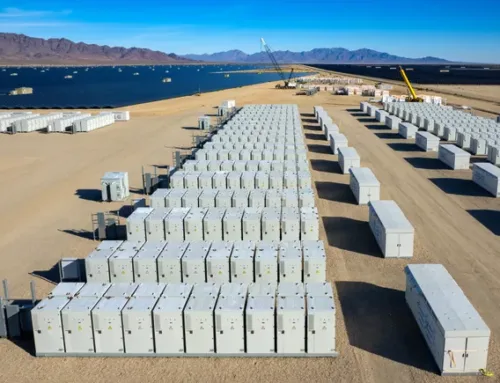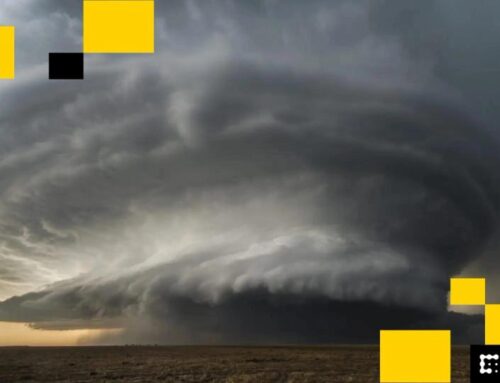IRA cuts have clean energy advocates concerned about growth of Nevada industry
May 17, 2025
Since the election, I’ve been reporting on how a Republican-led government would affect the Inflation Reduction Act (IRA), Democrats’ 2022 climate mega-bill that has driven enormous clean energy investment to Nevada.
The moment is now upon us — and the outlook for the IRA after the release of House Republicans’ mega budget bill ranges from bleak to dead, depending on who you ask.
This is just a first draft, and the provisions — including the rollback of key tax credits — are subject to change, likely depending on how effectively members such as Rep. Mark Amodei (R-NV) push for them (and what happens in the Senate).
Let’s get into it.
The News of the Week: IRA rollback
When Ways & Means Republicans released their portion of the “big, beautiful bill” Monday, clean energy advocates were dismayed. After a lengthy lobbying blitz, Republicans’ approach veered more toward a gutting of the bill — phasing out key credits and hampering the ones that have been preserved — rather than a more fine-tuned one.
Here’s what the bill would do:
- Cut two key demand-side credits — 30D, which provides a consumer tax credit for American-sourced electric vehicle purchases, and 25D, a subsidy for rooftop solar — by the end of the year.
- Phase down investment and production tax credits starting in 2029, with a full phasedown by 2031. Clean energy advocates were happy to see their tech-neutrality maintained — there were fears that solar, in particular, could be cut out.
- Begin to phase down the 45X manufacturing tax credit — a source of financing for critical minerals operations and battery and solar manufacturing — in 2031.
- End transferability for tax credits after 2027, a key tool for project financing flexibility that allows companies — many of which do not yet pay taxes or have limited liability because they’re not yet generating income — to sell their tax credits and carry them forward.
- Change the eligibility rules for tax credits so that projects must be “placed in service” rather than having begun construction to claim them.
- Create a complex web of “foreign entity of concern” provisions, many of which would need to be litigated in rulemaking, that limit companies’ ability to source parts or work with companies that have ownership interests from countries (namely China) that the U.S. has deemed to be national security risks.
The IRA helped create a veritable boom across the country — and in Northern Nevada in particular — in clean energy investment and helped build out U.S. supply chains for renewable parts, many of which had never been manufactured or processed in the U.S. before.
Read more about the IRA’s impact in Nevada, and how an IRA rollback would affect the lithium loop and the solar industry.
In Nevada specifically, the Clean Investment Monitor estimates that companies have announced about $28.3 billion in low-carbon energy investments in the state since the IRA’s passage — which brings jobs and workforce development programs. Of that, $15.4 billion is still unspent. Announced projects that have yet to break ground are the ones that could be most imperiled by the rollback, between the limits on financing and the foreign entity of concern rules, given that some parts and technology do not yet exist outside of China.
“Members of Congress should not be surprised if this bill passes as drafted, and over the next several years, a lot of projects that have been announced that people are excited about are significantly scaled down or do not move forward at all,” said Albert Gore III, the president of the Zero Emission Transportation Association, which has lobbied on behalf of tax credits that benefit the electric vehicle and battery supply chain, including for companies in Nevada.
Gore was particularly dismayed by the early phasedown of the manufacturing 45X tax credit and the complete cut of the 30D consumer tax credit. He said that those credits worked in tandem to incentivize automakers to onshore their operations, including sourcing lithium in the U.S.
Nevada, which has the only operating lithium mine in the U.S., has big plans for the critical mineral that exists abundantly in the state and powers EV batteries. Projects such as Thacker Pass and Rhyolite Ridge have received massive federal loans to build mining projects in the state, and have already signed offtake agreements with large automakers.
But industry advocates warn that battery makers and automakers were pursuing American lithium — including Nevada’s — because of the tax credits, which allowed them to source American lithium at a price point that was competitive with foreign-mined and processed lithium.
“I have a hard time thinking that the economic opportunity, the business forecast, the investment forecasts for the lithium loop that that have existed the past couple years in Nevada can endure and continue in the present state, given the demand destruction,” said Harry Godfrey, a managing director at clean energy trade group Advanced Energy United.
And even though the most important tax credit to Nevada — the manufacturing 45X credit — was maintained through 2031, Gore cautioned that the early phasedown, the incredibly tight foreign entity of concern provisions and the requirement that projects be in service will hamper future growth, including with announced projects. Mining, refining and manufacturing projects can take a decade, if not longer, to move through permitting and construction phases. Companies may now find the credit — and some of the market demand — gone by the time they’re ready to produce.
And in a macro sense, advocates — and members of Congress — are worried about the bill leading to energy costs rising. The IRA tax credits were intended to allow companies to move more quickly to generate new clean energy to add to the grid and help meet increasing demand. Without that, states may have to rely more on natural gas.
According to a study by the Clean Energy Buyers Association, repealing two key credits (which the Republican bill targeted for early phasedown) could lead to electricity prices being 7.3 percent higher for Nevada households from 2026 to 2032.
Some industry advocates expressed optimism that the proposal would be tweaked. Senate Republicans — several of whom want to maintain subsidies for less mature technologies — have already balked at some of the provisions.
The Nevada Angle
In March, Amodei told me that preservation of 45X (manufacturing) and 30D (consumer EV credits) were red lines for him. On Tuesday, he was less stringent on 30D, saying that the EV industry will continue to grow regardless and that the demand for Nevada lithium is not reliant on the credit.
“We’re pushing all the lithium stuff, pushing all the recycling stuff,” Amodei said. “I think there’s definitely demand there. I don’t think they need that credit to keep their place.”
Industry insiders agreed that the demand for lithium will persist, but that Nevada-made lithium may not be able to compete without the consumer tax credit.
But he and 12 other Republicans passionate about the preservation of key credits have already made a list of demands for leadership — changes to the foreign entity of concern provisions, restoring transferability and going back to the construction standard instead of the new “in service” requirement.
However, none threatened to withhold their vote.
Amodei said he met with advocates this week to formulate a lobbying plan for their most important asks.
“Now we got some time to put together a lobbying plan,” he said. “How do we fine tune this to make it even more [helpful] for the Teslas and Redwood [Materials]?”
The Impact
Growing the renewable energy industry in Nevada has been a bipartisan endeavor at the federal and state levels, with the geographic blessings of lithium and sunshine an appealing pathway to diversify the state’s economy beyond gaming.
This is just the first draft, and much of the negotiating will occur behind the scenes. But I’ll be monitoring how key stakeholders engage with the bill, especially when the Senate gets its say.
Around the Capitol
????Colorado River concerns — Rep. Susie Lee (D-NV) is raising a new concern over the Utah public land sales included in the reconciliation bill. Lee and Rep. Greg Stanton (D-AZ) say the parcels align with a planned route for the Lake Powell pipeline, which brings water from the Colorado River to Utah and could potentially upset negotiations over the river’s water usage.
Lee again called on Amodei to withdraw those portions of the bill.
????Apex authorization — Rep. Steven Horsford’s (D-NV) bill — which makes technical corrections to the Apex Site land by allowing Clark County to develop projects that produce hazardous byproducts on the federal land without specific approvals — passed the House by a voice vote.
What I’m Reading
Inside Climate News: Locals oppose ‘insane’ plan to sell 500,000 acres of public lands for housing in Nevada and Utah
One potential consequence of this saga — it united Nevada’s sometimes fractious conservation community.
The Nevada Independent:GOP budget includes ‘no tax on tips’, fulfilling Trump promise, NV Democrats want more details
The slated expiration of no tax on tips at the end of 2028 is perhaps the clearest indicator yet that Trump does plan to follow the Constitution and not run for a third term.
AP News: Las Vegas man sentenced to prison for threatening US Sen. Jacky Rosen and her family
A dark episode comes to a close.
Notable and Quotable
“When your chief global competitor sells product into the market consistently below its cost to produce that product, that creates a huge problem. There’s no substitute for the combination of [tax credits] in solving that problem.”
— Albert Gore III, on critical mineral economics
Search
RECENT PRESS RELEASES
Related Post




